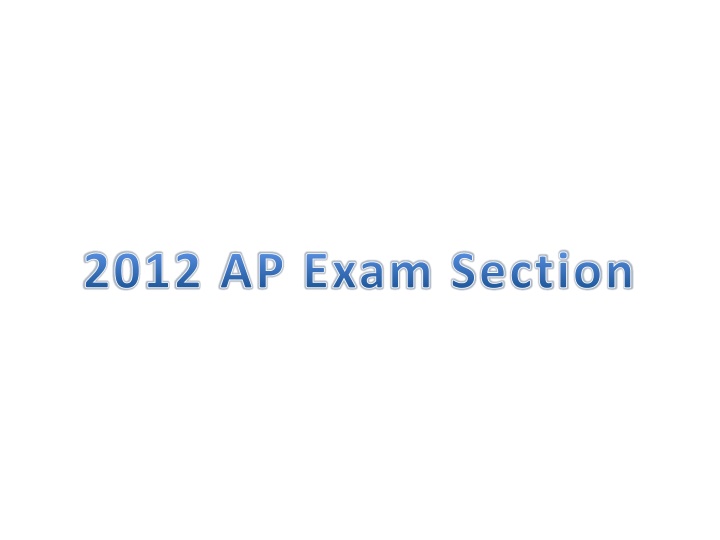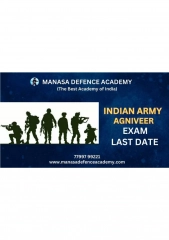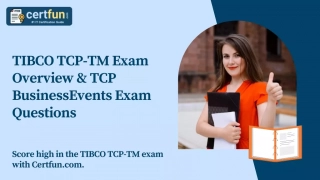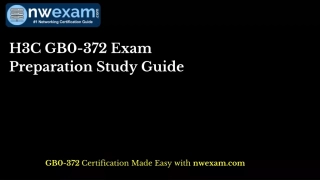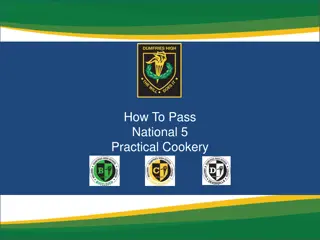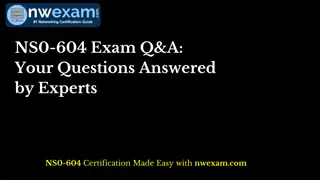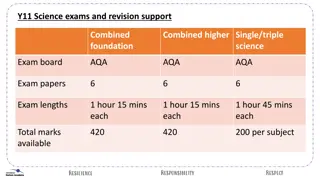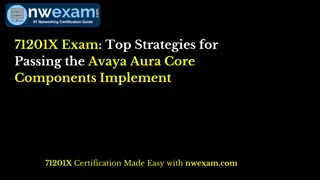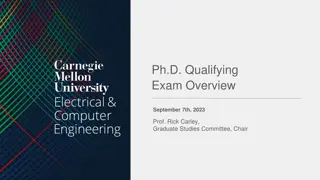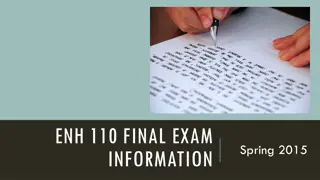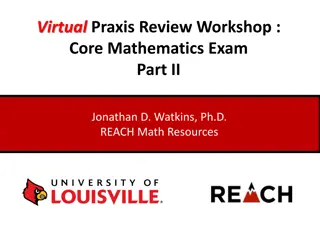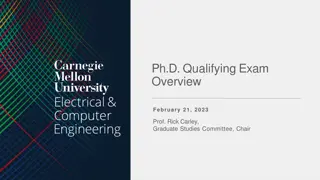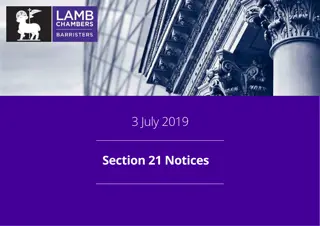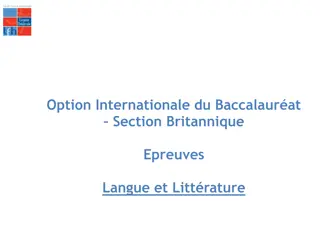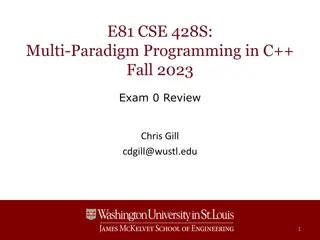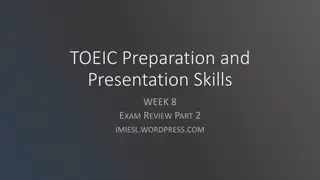2012 AP Exam Section
Delve into the 2012 AP exam section with a detailed examination of the content presented. Explore the questions, topics, and areas covered in this pivotal examination to gain insight into the requirements and expectations of the test. Understand the nuances and complexities of the exam through a comprehensive analysis that breaks down key components and illustrates essential details. This exploration provides valuable information for students preparing to tackle the 2012 AP exam section.
Download Presentation

Please find below an Image/Link to download the presentation.
The content on the website is provided AS IS for your information and personal use only. It may not be sold, licensed, or shared on other websites without obtaining consent from the author.If you encounter any issues during the download, it is possible that the publisher has removed the file from their server.
You are allowed to download the files provided on this website for personal or commercial use, subject to the condition that they are used lawfully. All files are the property of their respective owners.
The content on the website is provided AS IS for your information and personal use only. It may not be sold, licensed, or shared on other websites without obtaining consent from the author.
E N D
Presentation Transcript
2012 overall, national scores 5 48,665 4 89,834 3 128,472 2 123,952 1 52,912 11.0% 20.2% 28.9% 27.9% 11.9%
Straightforward Question This passage is an example of The pronoun it refers to Interpretation and Conclusion Questions Lines 52-57 serve to All and Except The AP Language and Composition exam is all of the following except Inference or Abstract concept not directly stated In Letter from a Birmingham Jail, the reader can infer that the speaker is Footnote Asks you to reference source citation STRUCTURE of ?s
16. The organization of the passage can best be described as STRAIGHTFORWARD (A) personal narrative followed by analysis (B) empirical data followed by conjecture-empirical data is that which is observable and conjecture is an unsupported guess (C) nonjudgmentalexplanation of a current phenomenon followed by a question-there is no question (D) descriptive analysis followed by a final judgment (E) condemnation of a practice followed by partial acceptance that s contradictory and inaccurate; author presents others criticism
17. In context, the author places the term book club in quotation marks in lines 3 and 9 in order to INTERPRETATIVE/CONCLUSIVE (A) show that these are humorous examples no humor (B) highlight how formal some of these clubs are that s a criticism broached LATER by another writer this author cites (C) reveal that the book clubs that appear online or on television are unsatisfactory no judgment about the clubs (D) suggest that the term is being broadened beyond its original meaning (hint: format has spread to other venues and media ) (E) imply that many book club members do not like the term no mention of members personal opinions
18. The first paragraph (lines 1-15) serves to INTERPRETATIVE/CONCLUSIVE (A) explain why the author enjoys one way of reading it is not a personal piece (B) describe the extension of a particular activity into nontraditional areas (book clubs on TV, online, retreats ) (C) make generalizations that will be developed later: no generalizations are developed; rather, opposition is presented with final analysis (D) explore ways in which people can structure free time no recommendations about what to do with free time are made (E) detail the power of media and mass marketing to censor censoring is never broached
In a newspaper opinion piece titled Why I Wont Join the Book Club, one contributor expressed alarm 20 that reading was becoming another scheduled activity to be slotted in like the trip to the gym and the grocery store ; self-improving readers pop books as they would vitamin tablets. But books are not about schedules, author Stephanie Nolen argues; 19. According to lines 23-26, Stephanie Nolen s primary criticism of book clubs is that they (A) are too programmed seen with similes of book clubbing like gym or grocery visit; or taking vitamins INTERPRETATIVE/CONCLUSIVE (B) do not offer enough variety variety not addressed (C) cause readers to be anxious reader anxiety not addressed (D) overlook many classics reading selections not addressed (E) forego quality for quantity book titles not assessed for merit
In living rooms and bookshops, clubs are frazzling under the stress, giving rise to a whole new profession: the book-group therapist. 5 SEE FOOTNOTE 5 Daspin, Book-Club Lovers Wage a War of Words. The piece originally appeared in the Wall Street Journal. 20. The clubs referred to in line 39 are discussed in STRAIGHTFORWARD/FOOTNOTE (A) the online discussion group of a particular book club (B) a study sponsored by book club participants: no sponsorship addressed (C) an editorial in a Canadian magazine (D) a guide written by Elaine Daspin: isn t a guide (E) an article published in the Wall Street Journal: The 5 indicates that a footnote provides the source for the quote
While book-club therapists may well be confined to the rarefied worlds of the Upper East Side or Long Island, authors of recent book-club guides reiterate the need to establish common purposes, regular routines, and guidelines for thorough preparation. 21. The recent book-club guides (lines 45-46) tend to emphasize INTERPRETATIVE/CONCLUSIVE (A) how book clubs need to be structured and regular in order to succeed guidelines indicate a method/formula for efficacy (B) how difficult it is to start a book club in New York (C) how often even the best book clubs fail (D) the variety of reasons that people have for starting book clubs (E) the challenges of selecting books for discussion
22. The last paragraph (lines 49-64) marks a shift from ABSTRACT (A) popular to academic contexts: early piece was about popular formats for book clubs, like Oprah s TV show, online sites, retreats whereas last paragraph addresses school, college, and university classrooms as places for lit discussion (B) supported to unsound generalizations no generalizations earlier; rather, specific claims from published authors (C) impersonal to personal examples: no personal examples in passage (D) subtle irony to explicit sarcasm: What the what? (E) neutral to negative characterization of book clubs: end is more positive, as it acknowledges that despite research s neglect of the communal nature of book clubs, there is something different, something added about sharing and discussing literature with other people
23. The function of lines 52-58 (Yet despite . . .abstractions) is to INTERPRETATIVE/CONCLUSIVE (A) argue for the value of a particular literary theory: no lit theory is presented as right (B) explain how important it is not to make abstract judgments: this isn t Nick Carraway! (C) point out a discrepancy between teaching practices and literary theory (D) highlight the demand for a way to measure emotional responses to texts most studies already focus on emotional response (E) explore the author s views about reading in isolation: no personal opinions from author; it merely mentions how reading in isolation serves as focus for most research
But club and classroom participants know that there is something different, something added, about sharing and discussing literature with other people. INTERPRETATIVE/ CONCLUSIVE 24. The final sentence (lines 62-64) serves to (A) conclude an argument begun in the first paragraph: first paragraph serves to note the book club s entrance into other venues (B) suggest a probable cause for an ongoing phenomenon: the cause for the popularity of book clubs rests with the appeal of sharing/discussing lit rather than reading alone (C) argue that publishers need to pay more attention to book clubs: publishers not even mentioned (D) offer a final analysis of the phenomenon described in the second paragraph: tough; I originally chose this one..2nd paragraph offers specific critiques to which the author does NOT return in the last paragraph (E) explain why the author has chosen a particular field of study: no personal opinion from author
So pronounced is the book-club phenomenon that the format has spread to other venues and media, the most famous of these being the book club component of Oprah Winfrey s television talk show. Staged like an actual book-group meeting, with invited discussants and a cozy living-room setting, the Winfrey show can boost a featured title to instant bestsellerdom and turn authors into stars. There are now book clubs online, in bookstores, andfunctioning as consumer focus groups for publishers.1 FOOTNOTE/INTERPRETATIVE/CONCLUSIVE 25. One function of sentence 3 (lines 8-10) and endnote 1 is to (A) give an example of a group that earns money by reading no group is mentioned as earning $ by reading (B) show that book clubs are not intended for literary scholars-originally I thought this b/c of expanded scope of readers but I was wrong! (C) note the connection between marketing and book clubs- you need to look to sentences above as well (D) cite one book club as a particular model of excellence-no group held up as an exemplar (E) suggest the benefits of online discussion groups: no benefit discussed and online group is too specific
2 For example, Vancouver bookseller Celia Duthie is developing such retreats at a country inn. There are discussion periods and visits by authors and, most importantly, time to read. See Keyes, Out of the Woods. Keyes piece serves as a reference for those who want to read more about the kind of retreats that Duthie is developing 26. It can be inferred from endnote 2 that Out of the Woods is FOOTNOTE/INTERPRETATIVE/CONCLUSIVE (A)an article about a type of retreat (B) an expos about fee-based book clubs-it isn t pointing out $ issues for critique (C) an essay about book club protocol: it has ideas about retreats and methods, but it isn t specifically about protocol (D) a meditation on favorite works by famous authors: it isn t reflective, and famous authors aren t broached (E) an article about how to start a traditional book club: the retreat notion isn t traditional, plus it isn t a how to
3 Some popular guides are Greenwood et al., The Go on Girl!; Jacobson, The Reading Group Handbook; and Saal, The New York Public Library Guide to Reading Groups. A new entry to the field, developed with a particular eye to the needs of Canadian clubs, is Heft and O Brien, Build a Better Book Club. FOOTNOTE/INTERPRETATIVE/CONCLUSIVE 27. The function of endnote 3 is to (A) offer specific examples of one of the types of resources mentioned this is a purpose question for which patterns of development might be helpful to recall (B) convince the reader of the value of book clubs (C) test whether the reader is interested in particular books (D) evaluate tips on how to set up book clubs (E) compare the strengths and weaknesses of certain books
2 For example, Vancouver bookseller Celia Duthie is developing such retreats at a country inn. There are discussion periods and visits by authors and, most importantly, time to read. See Keyes, Out of the Woods. 3 Some popular guides are Greenwood et al., The Go on Girl!; Jacobson, The Reading Group Handbook; and Saal, The New York Public Library Guide to Reading Groups. A new entry to the field, developed with a particular eye to the needs of Canadian clubs, is Heft and O Brien, Build a Better Book Club. 28. The information in endnote 2 is different from that in endnote 3 in that endnote 2 FOOTNOTE (A) is critical while endnote 3 is neutral (B) assumes that readers do not like research while endnote 3 assumes that readers like research: no assumptions are made about readers/research (C) is concerned with local book clubs while endnote 3 relates to global issues (D) primarily provides an illustration of a phenomenon while endnote 3 primarily lists resources (E) relates mostly to marketing while endnote 3 relates mostly to cultural conflicts in book clubs
